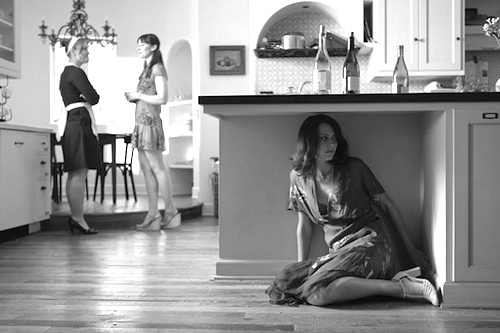[Editor’s Note: the post below appears today on the front page of The Huffington Post.]
By Jason Apuzzo & Govindini Murty. Steven Spielberg’s Falling Skies has unexpectedly become one of the best sci-fi TV shows in years – a dark, gritty and emotional look at an American society struggling to survive after an apocalyptic alien invasion.
The show’s third season debuts on TNT this Sunday, June 9th on Father’s Day, which is appropriate, given the show’s focus on fathers and their responsibility toward their children. The series has already been a ratings bonanza for TNT – Falling Skies was last summer’s top-rated drama on basic cable – and having seen the first five episodes of the upcoming season, we can tell you that Season 3 looks to be an even bigger hit.
So why would the success of Falling Skies be unexpected, especially given the involvement of executive producer Steven Spielberg and series creator Robert Rodat (Saving Private Ryan)? Possibly because when the show first debuted in the summer of 2011 – the long, hot sci-fi summer that gave us Transformers: Dark of the Moon, Super 8 and Cowboys & Aliens – the idea of another movie or TV show about alien invasion seemed redundant.
And after getting their tails (or robot parts) kicked on-screen in recent years by Harrison Ford, Tom Cruise and the U.S. military, you’d think aliens would know better than to invade by now, anyway.

Starring Noah Wyle and Moon Bloodgood, Falling Skies (Season 2 of which arrived this week on Blu-ray) has carved out its own niche, however, largely by doing basic things well – telling a classic American story of the fight for freedom, and of families struggling to stay together in wartime. And with its populist vibe and focus on civic duty, Falling Skies is also the sci-fi show for audiences who don’t usually watch sci-fi. Indeed, the series often feels inspired as much by American Westerns as by science fiction.
And, of course, there’s always the magic touch of Steven Spielberg.
“Steven Spielberg is the master of science fiction, and of drama,” Noah Wyle told us recently at Zoic Studios in Culver City, where Falling Skies‘ visual effects were being completed. Series showrunner and writer Remi Aubuchon agreed: “Steven actually is very involved in our show … he certainly reads all the scripts and watches all the dailies, and he’s intricately involved in the design of the creatures and the cool things.”
Season 3 of Falling Skies picks up where the previous two seasons left off, with former history professor Tom Mason (Wyle) and his extended family trying to pick up the pieces of civil society in the wake of a devastating alien attack. Like some grizzled, bearded patriarch out of the old West – and now serving as the acting President of the United States – Mason tries to hold it all together, as his provisional government in South Carolina forges a dubious alliance with a new alien species encountered at the end of last season.
On the home front, Mason also welcomes an unusual new daughter into the world, born to Dr. Anne Glass (Moon Bloodgood), his longtime lover and the show’s emotional center. Meanwhile, Mason’s son Hal (Drew Roy) struggles to keep himself from being used by enemy aliens as a spy, all while juggling the two edgy blondes in his life (Sarah Sanguin Carter and Jessy Schram) – one of whom just happens to be the enemy aliens’ new commander.
Such is family life in Falling Skies. Continue reading LFM’s Jason Apuzzo & Govindini Murty at The Huffington Post: A Look Behind Steven Spielberg’s Falling Skies, One of The Best Sci-Fi Shows in Years




